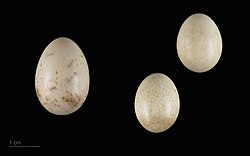Birds through the year (1922) (14568805429)
A. W Seaby
Internet Archive Book ImagesIdentifier: birdsthroughyear00thom (find matches)
Title: Birds through the year
Year: 1922 (1920s)
Authors: Thomas, William Beach, Sir, 1868-1957 Collet, Anthony Keeling, 1877-
Subjects: Birds -- Great Britain Birds -- Pictorial works
Publisher: London, Edinburgh, T.C. and E.C. Jack, ltd
Contributing Library: American Museum of Natural History Library
Digitizing Sponsor: Biodiversity Heritage Library
View Book Page: Book Viewer
About This Book: Catalog Entry
View All Images: All Images From Book
Click here to view book online to see this illustration in context in a browseable online version of this book.
Text Appearing Before Image:
ards the colder quarter. A song-thrush marked inBerkshire in April was found in November near Norwich—having migrated in exactly the opposite direction tothousands of thrushes, and larks, and plovers, and rooks, andmany other kinds of birds which come over from Germany toEngland at that time. Even more striking was the eastwardjourney of a starling marked in Berkshire in February, whichwas found in Kent before the end of the month. Becausethe east of Europe is colder in winter than the west, theusual line of autumn and winter migration is south-westerly,and sometimes even north-westerly, and not, as might bethought, direct from north to south. To a considerable extent—exactly how much we cannotyet tell—migrating birds follow definite routes, such as ariver valley like that of the Thames as it leads northwardspast Oxford, or the line of the seashore. The rarity ofcertain birds of double passage in spring as compared withautumn, or vice versa, indicates that they do not all follow
Text Appearing After Image:
THE SOUTHWARD FLIGHT 273 the same route on both journeys. At least one striking casehas been discovered in which the spring and autumn trackslie far apart. The American golden plover flies straightacross the sea in autumn from Nova Scotia to the coast ofSouth America—a distance of about 2,500 miles; but itreturns in spring by a more circuitous route to westwards,through Mexico and up the Mississippi valley. There seems to be an obvious reason in the failure of thefood-supply why birds of passage should depart southwardin autumn to milder climes. But it is not so easy to under-stand why they should want to return in spring. It mightbe thought that they would be well enough off wherethey were, like the resident species of tropical forests,without daring the long journey over land and sea toreach some distant corner of the British islands, or somehaunt even further to northwards, within the Arctic circle.The key to this movement is probably to be found in theirgeneral habit of scatteri
Note About Images
Relevantní obrázky
Relevantní články
Kukačka obecnáKukačka obecná je druh ptáka z řádu kukaček (Cuculiformes) a čeledi kukačkovitých (Cuculidae). V Evropě jde společně s příbuznou kukačkou chocholatou o jediného zástupce kukaček a současně o jediný ptačí druh patřící mezi obligátní hnízdní parazity. Zbarvením je tento pták velikosti holuba vcelku nevýrazný, převážně šedý nebo hnědý s bílým, tmavě pruhovaným břichem a žlutýma nohama. Samci se na jaře ozývají charakteristickým a pronikavým voláním „ku–ku“, které kukačce dalo jméno v mnoha světových jazycích. .. pokračovat ve čtení


















